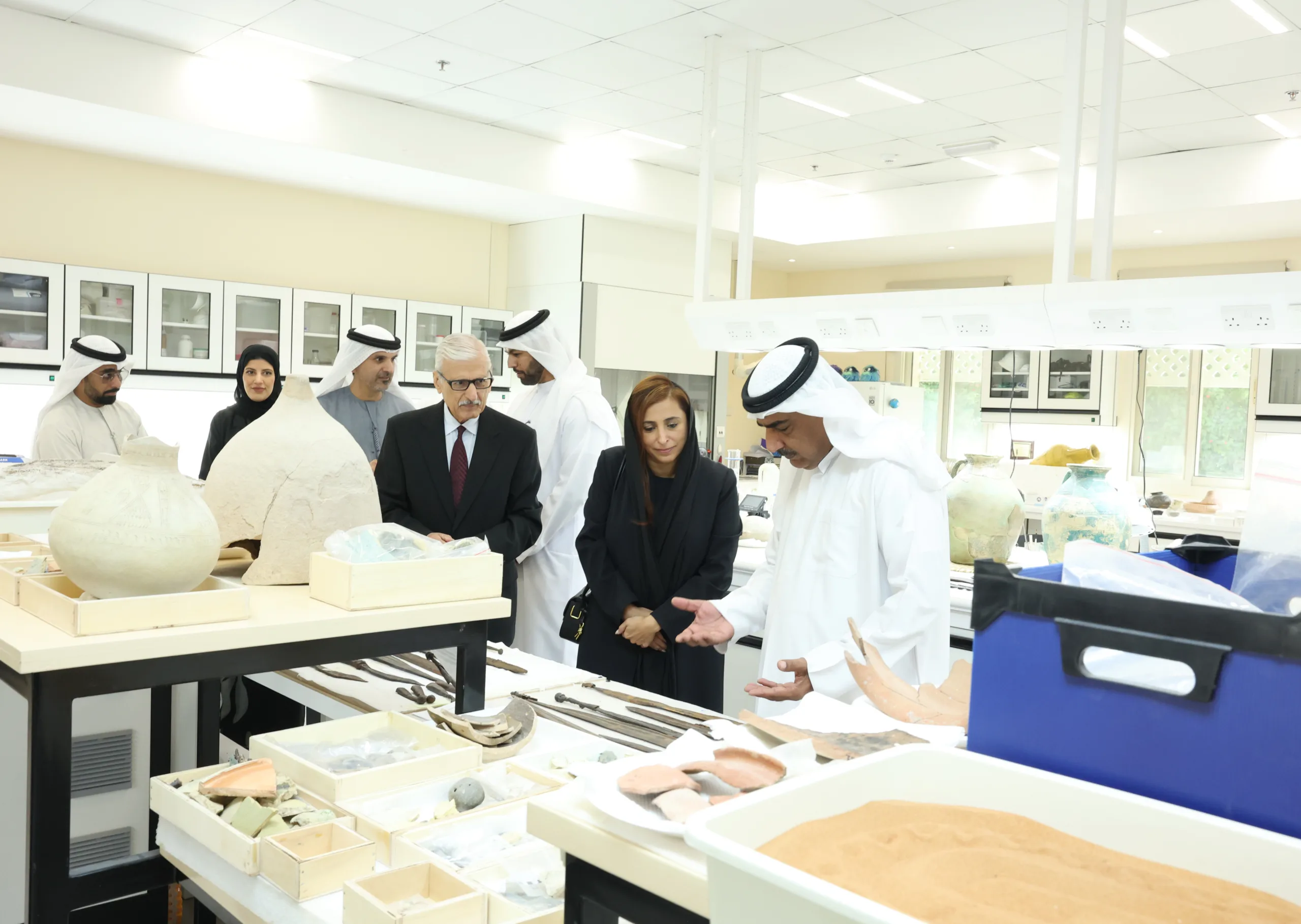Sharjah Archaeology Authority (SAA), recently organized a remote lecture titled “Preservation of Ancient Silver Coins.” The lecture was presented by Dr. Al-Moataz Billah Al-Shahawi, a member of the American Numismatic Association, researcher at the Getty Foundation, member of the University of California and the Institute for the Study of the Ancient World in New York and a member of the American Alliance of Museums, a PhD researcher in the restoration and maintenance of mineral monuments at Cairo University, and a specialist in antiquities restoration at the Ministry of Antiquities.
The presentation was part of a series of weekly lectures organized by the authority, with the aim of raising awareness about restoration and maintenance of antiquities. Approximately 230 archaeology enthusiasts from within the region and outside attended the lecture.
Al-Shahawi began the lecture by talking about the history and discovery of silver before 5,000 BC. He said that silver is an element that cannot easily be found in the nature and requires to be extracted from other elements essential for its formation, including copper, nickel, zinc and lead.
Al-Shahawi further mentioned that silver is relatively less firm than gold, hence its sensitivity to formation is higher. It is also essential to note that the electrical and thermal conductivity of silver is high, increasing the advantages of its properties. It is important to understand the density of the metal in order to prevent any sort of forgery, he said.
The lecture also provided an insight into the methods of producing coins in the past, including casting and forging. Casting is a relatively time consuming method of pouring hot liquid into a mold of desired shape and then left to solidify. Forging, on the other hand was considered a more effective technique in addition to the most widespread alloy being the electrum alloy. The first ever coin was apparently discovered in Libya and is presently in Anatolia. It dates back to the 7th century BC and was made of electrum — an alloy — a combination of 55 per cent gold and 45 per cent silver. The most famous ancient coins are Belon, containing 40 per cent silver and 60 per cent copper.
Coins were basically classified based on units and scales, which differed according to the ages and the monetary system in which they were present. For instance, in the Baltic era, there were different scales for the same category, but they varied according to the ruling King and the time period. In the Islamic era, there was a dirham made of pure silver, and specifically in the era of The Rashidun Caliphs, dealings were done via the Sharia law.
Al-Shahawi defined corrosion as the metal returning back to its raw original form. This transformation happens due to thermal and electrical activity and due to the prevailing weather conditions. It is essential to determine the nature of corrosion in order to devise an appropriate treatment plan for the coins.
Silver coins, typically do not corrode in regular settings, but tend to develop corrosion forming bacteria, if exposed to an environment containing ozone, nitrogen or hydrogen sulfate. Silver is also a relatively fragile metal, which could be subjected to breakage after remaining buried for long periods under the soil, due to the nature of the environment, the salt content and the anatomical composition of silver coins that are not entirely silver but mixed with copper.
Al-Shahawi said that proper diagnosis is essential to devise the right treatment plan. Among the several steps for diagnosis suggested include, photography— to understand the nature of the alloy, composition and corrosive materials, based on which a treatment method can be decided upon.
The documentation process is done by taking pictures through digital cameras and X-rays to detect the thickness of the corrosion layer and scanning electronic imaging.
Sharjah Archaeology Authority provides a platform to learn about the various aspects regarding the preservation of the local archaeological and heritage components, to align with the values and stature of the Emirate of Sharjah. They constantly apply a systematic work approach, in accordance with the latest international practices and pioneering standards, to ensure sustainability in preserving archaeological heritage for future generations to know.




